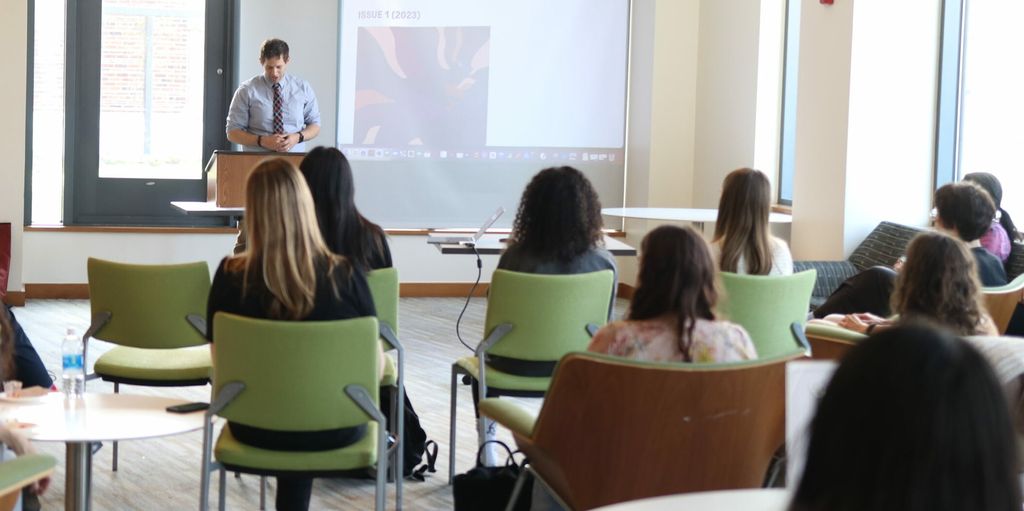By Katrina Scalise (COM`25)
 On Monday, May 1, the College of Arts & Sciences’ Writing Program hosted a launch event for the first issue of its new journal, Deerfield, named after the street outside its building, the Yawkey Center for Student Services at 100 Bay State Road.
On Monday, May 1, the College of Arts & Sciences’ Writing Program hosted a launch event for the first issue of its new journal, Deerfield, named after the street outside its building, the Yawkey Center for Student Services at 100 Bay State Road.
The new journal will replace the program’s old publication, “WR,” which went on hiatus during the pandemic.
“The old name, WR, was self-referential and hard to say,” said Writing Program Director Sarah Madsen-Hardy. “The new journal is named for Deerfield Street, just outside our building, and reflects engagement with the world outside the WR classroom.”
Deerfield features works by students written in WR classes of all levels, and includes essays, op-eds, poetry, and podcasts, among other multimedia entries. The journal received over 180 student submissions, and chose 10 written submissions and two podcasts for its inaugural issue.
“Although we only publish a small number of these submissions, the editorial board was impressed with talent and skills exhibited in the submitted projects,” said Deerfield Co-Editor Christopher McVey, senior lecturer in the Writing Program and Kilachand Honors College. “Our published projects illustrate the great range of diverse genres and media produced in WR classes, including traditional academic essays, podcasts, poetry collections, and more.”

During the launch event, the co-editors of the journal introduced the inaugural issue, and contributors read excerpts from their featured pieces. Some student contributions were also recognized with CAS accolades, including the Prize Project Award and Tony Wallace Award for Writing Excellence.
“The projects in Issue 1 not only cover a wide range of topics, including gender, sexuality, language, race, power, climate change, and personal responsibility; they also demonstrate a variety of approaches to argument,” wrote McVery and fellow co-editor, WR master lecturer Jessica Bozek, in their editor’s note. “We invite you to sift through Issue 1, to sit with the questions and ideas these remarkable students offer, and then to share what you have learned with someone else.”
Students were involved throughout the process of creating the journal, including serving on the editorial committee alongside Writing Program faculty. Student contributors were also surveyed on their book and media recommendations, as well as their thoughts on the writing process and AI writing, which are included in the Extras section of the issue.
Students who opted to present excerpts of their featured work were met with enthusiasm and encouragement, with event attendees applauding every contributor shared.
“We released the journal in May, when friends, classmates, and instructors could gather to hear the featured writers read from their texts,” Madsen-Hardy said. “It was a great joy to be together in person to celebrate our students’ writing!”